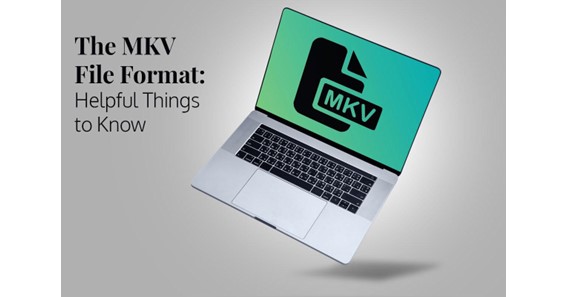The MKV format is a Matroska video file containing subtitles, audio, and images. Typically, MKV files are used to store and share HD videos and other content online. It is considered ideal for TV shows, HD movies, and streaming content in foreign languages, as it supports multiple audio and video language tracks. Since this format isn’t as ubiquitous as the MP4 format, you might not have all the information. Here are some helpful things to know about the MKV format.
What is the Mkv Format?
Matroska Multimedia Container is an open and free container video format allowing users to store an unlimited number of audio, video, subtitle tracks, or images in a single file. It is a universal format for storing multimedia content like TV shows and movies. While it is similar to other containers like MP4, AVI, and ASF, its specifications are open, and its implementation is open-source software.
Association Loi 1901 is a non-profit organization that supports MKV, and it is a royalty-free standard provided under the GNU L-GPL license. For commercial purposes, MKV playback and analysis libraries are offered under the BSD license.
The extension for MKV files is .mkv for video, .mka for audio-only files, .mk3d for stereoscopic video, and .mka for subtitles only.
However, if you are a Mac user, you might be unable to play MKV files on your system. This might make you wonder how to watch MKV on Mac since these files are not natively supported on Mac computers. Some of the top MKV players you can use to play MKV files on your Mac are Elmedia Player, VLC Player, Plex, and Mac Blu-Ray Player.
Click Here –Are you making any of these top five mistakes in training?
History & Goals of Mkv Format
The Matroska project was launched in December 2002 when it split from the MCF or Multimedia Container Format after a disagreement between Lasse Kärkkäinen and Steve Lhomme regarding the use of EBML (extensible binary meta language). The MKV format was founded by Lhomme, and several developers moved to the new project after the MCF lead developer took a break from coding.
Matroska developers stressed the benefits of using EBML instead of a different binary format so that the format is future-proof and can easily accommodate changing objectives. Unlike AVI and other formats, the MKV file format is designed to consider longevity and extensibility.
Matroska team members aimed to create an extensible, modern, and flexible container format compatible across different multimedia platforms. Also, the format seeks to offer robust streaming support.
To embed this format in different multimedia devices, the Matroska team works with third-party hardware manufacturers.
Advantages of MKV Format
- The MKV file format is open source, and this is the format’s first advantage. It makes the code freely available to developers worldwide and users. Open-source programs have a higher potential for broader implementation. Other formats, on the other hand, contain proprietary codes that are solely developed by the originating company.
- The format supports chapters, DVDs, and multiple audio streams, including audio tracks in various languages. Similar to a DVD, you can select the language of your choice.
- The MKV format supports soft titles, which is a separate subtitle track in the container. Soft subtitles can be disabled or turned on by users. If you have used AVI files, you know the format comes with subtitles that are unnecessary and cannot be turned off.
- MKV files contain variable framerate and bitrate audio, along with B-frame compression. Unlike other containers, the MKV format supports almost all video formats, such as MPEG-2, MPEG-1, MPEG-4 Part 2, MPEG-4, etc.
- The file format supports almost all audio formats, including OGG, Speex, and FLAC. Thanks to the format’s EBML foundation, the Matroska team believes all future video and audio formats will also be supported.
What are The Cons of The Mkv Format?
It is not all peachy with the MKV format. Although there are some amazing pros, as mentioned above, there are some cons you must be aware of.
- Although the format is versatile, it is not universally supported by all media players and devices. This may become an issue at times and require users to install additional software or convert the files.
- MKV files are of high quality, and this results in larger file sizes. This may take up a lot of space on your device.
- Unlike other formats, MKV doesn’t support extensive metadata. This can be a problem for certain applications.
- The MKV format isn’t supported by all video editing software. Therefore, you may have to convert the files before editing. Furthermore, hardware acceleration for decoding and encoding MKV files might not be as widely supported as other formats.
- The MKV format doesn’t support DRM (digital rights management) natively, and this might limit the format’s use for distributing protected or copyrighted content.
The Bottom Line
These are some helpful things about the MKV format you might find useful if you are dealing with this file format.

9 thoughts on “The MKV File Format: Helpful Things to Know”
Comments are closed.